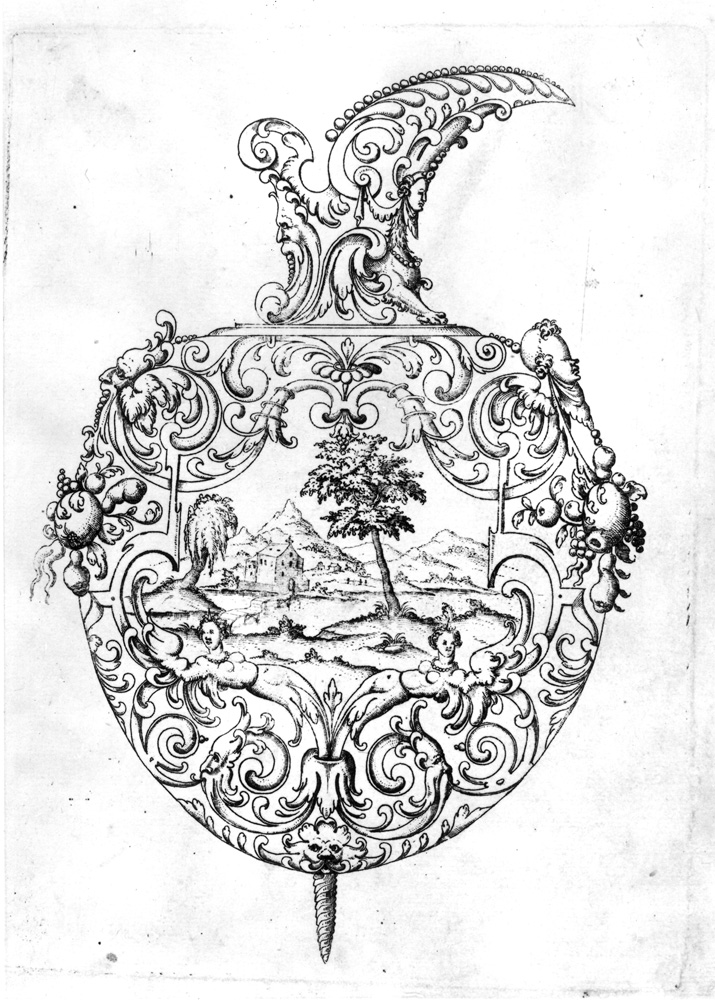Johann Sibmacher (continued)

Who was Johann Sibmacher? This Nuremberg etcher and artist of applied graphics, perhaps also active as a painter, is now nearly forgotten. Only his book of coats of arms, the Wappenbuch, is still famous. First printed as a tiny, now very rare booklet in 1596, it was republished in a much expanded and richly illustrated form in two corpus volumes in 1605 and 1609. Even today the new editions of the heraldic book are called "Der große Siebmacher". Yet Sibmacher's activity was not limited to the illustration of coats of arms, and his artistic production is far more varied and interesting than one might expect.
In 1618 the Nuremberg patrician Paul Behaim drew up the inventory of his noted print collection (Berlin, Kupferstichkabinett, inv. no. 79 C 32), which included Sibmacher's work on p. 134 - more than 100 single sheets and series arranged according to subject matter, comprising portraits, the Twelve Months, the little book of coats of arms ("22 klein wapenbüchlein an° 1596), the two large heraldic corpus volumes ("2 wapenbüchs...darinne 5720 wapen"), and the prints for Hulsius' voyages to East-India ("150 Ostindianische historien"). Though this was the first catalogue of Sibmacher's prints it was unknown to later generations because it was never printed. In his Peintre-Graveur (Vol. 9, Vienna 1808, pp. 595-596), Adam Bartsch mentioned him only briefly, without describing the books of coats of arms. Passavant's Peintre-Graveur (Vol. 4, Leipzig 1863, pp. 212-216) gives a far broader survey of Sibmacher's oeuvre. However, it was Andreas Andresen who published the first comprehensive catalogue of the work of the late Mannerist Nuremberg artist in his Der deutsche Peintre-Graveur (Vol. 2, Leipzig 1865, pp. 281-420), which until recently served as the basis of our understanding and knowledge of Sibmacher.
Gero Seelig's catalogue in the Hollstein series sets a standard. His description of Sibmacher's prints, based on connoisseurship, accuracy and enthusiasm, is complete and full of information. Moreover, they are fully illustrated for the first time. Leafing through the pages, we can now finally recognise and appreciate Sibmacher's versatility and artistic quality. There are so many more exciting things to discover besides the heraldic and ornament prints! We are confronted with an intriguing aspect of German culture at the end of the 16th century and beginning of the 17th century. Mention should just be made of the illustrations of mathematical instruments in Levinus Hulsius' treatise of 1604 and the illustrations of perspective figures in Paul Pfinzing's treatise on geometry and perspective of 1599.
Compiler: Gero Seelig
Editor: Holm Bevers
ISBN: 978-90-75607-87-1
296 pp.

